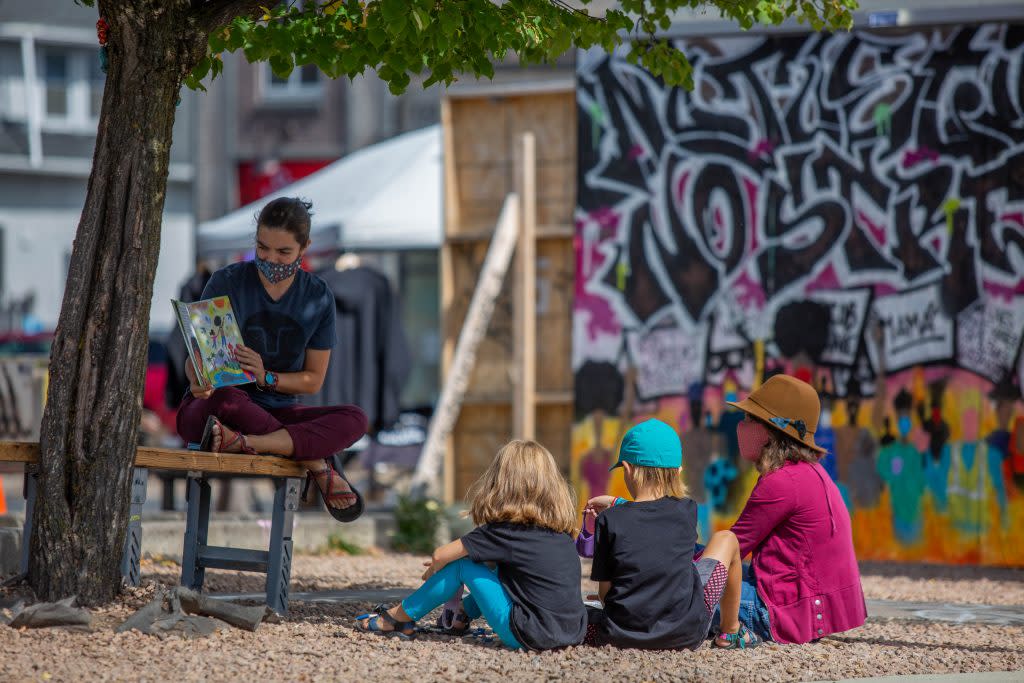Minnesota is a good place for children, but we can still do better

In this Reformer file photo, Monica Rojas reads books to children, two of them hers, at George Floyd Square. Photos by Will Jacott/Minnesota Reformer.
I’m proud to call Minnesota home.
One reason is because our state values its young people. Children’s Defense Fund-Minnesota was happy to learn Minnesota retained its rank as America’s fifth best state for child well-being, according to the Annie E. Casey Foundation’s 2024 KIDS COUNT Data Book.
We should celebrate this extraordinary accomplishment. But there’s room for improvement — more must be done to improve the well-being of all Minnesota’s young people.
We fell a spot to the 19th best state for education after an evaluation of the 2021-2022 school year. Many things happen outside the classroom that impact results inside of it. As a state, we need to focus on these issues, so we see better results.
One area the Legislature must address is Minnesota’s ongoing struggles with chronic absence. This issue, which was exacerbated by the pandemic, severely interrupted the learning routines of thousands of Minnesota children. Consequently, more Minnesota fourth and eighth grade students were found not proficient in reading and math, respectively, during the 2021-2022 school year compared to years past.
This is not a small issue. In that same year, one-third of all Minnesota students were chronically absent, missing 10% or more of school days on the calendar. We must confront the root social causes of this problem and invest in solutions to reverse its trend. A task force to examine absenteeism and grants to support pilot projects across the state — both passed in 2024 — are a good start. More investments in family economic stability and healthy child development, including mental health supports, should also help.
Additionally, we recommend Minnesota improve accessibility to tutoring programs and out-of-school learning opportunities, so we can boost our students’ reading and math test scores. Young Minnesota families have called for action on this front for years. Afterschool Alliance, a nonpartisan, nonprofit organization that aims to increase after school program accessibility across America, released a report four years ago called “America After 3PM 2020.” It found for every child in an after school program in Minnesota, there were three more children in the state who wanted to participate in similar programs but could not.
Children who participate in after school or out-of-school learning opportunities routinely outperform their peers, academically, compared to those who do not. Our nationwide CDF Freedom Schools program supports this fact. Its six-week-long educational model — which includes 15 sites within our seven-county metro area — encourages children to read culturally relevant literature during the summer. Last year, 85% of the K-12 scholars enrolled in our schools across America maintained or gained an average of eight months in their reading skills.
So, why don’t we have more Minnesota children participating in out-of-school learning opportunities? Afterschool Alliance found money is partly to blame. Thirty-seven percent of residents they surveyed said after school programs were too expensive. Our lawmakers have the power to change this reality. Minnesota must invest more in out-of-school learning grant programs. We must consider making permanent and increasing these grants, so such academic supports can make a sustained impact.
Now, there is good news. Recent actions taken by Gov. Tim Walz, his administration, and the Legislature have put us in good position to improve child well-being. In 2023, Walz signed a bill into law for Minnesota schools to provide free meals to any students who want them, regardless of their family’s income. The proposal has already received overwhelming support from the public, according to survey data. Additionally, Minnesota made historic investments in housing, child care, education, health and family economic stability.
Children need holistic support of their basic needs to thrive, and the fact these investments were made after the period the 2024 KIDS COUNT Data Book analyzed suggests we’ll see improvement.
We cannot rest on our laurels, however.
It’s imperative we all proactively work to ensure Minnesota’s new Department of Children, Youth, and Families is successfully rolled-out this summer and historic investments are implemented well so they can achieve their stated purposes.
We can build on these successes in future years to meet the Walz administration’s goal of eliminating child poverty and making Minnesota the best state to be a child.
Minnesota’s future looks bright. Let’s do everything we can to give our youngest Minnesotans the success and joy they deserve.
The post Minnesota is a good place for children, but we can still do better appeared first on Minnesota Reformer.

